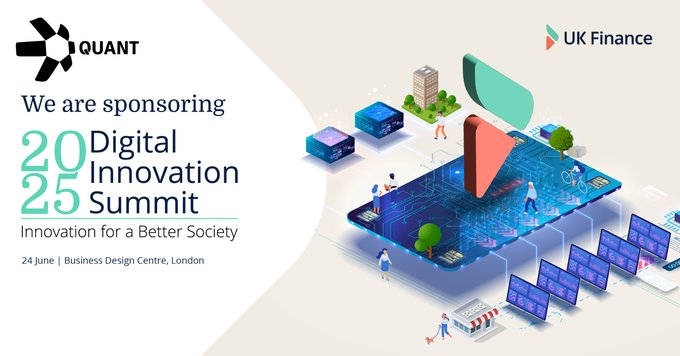Why Quant Network Is a Key Player in Cross-Chain Infrastructure
Since launching the Overledger operating system in 2018, Quant Network has focused on solving one of the blockchain industry’s core challenges—interoperability. By connecting more than 45 blockchain networks, including Bitcoin, Ethereum, and Hyperledger, Quant has built an “on-chain highway” that allows enterprises to access multichain ecosystems without overhauling their existing systems. As of May 2025, the QNT token’s market cap has surpassed $1.2 billion, making it one of the most prominent blockchain projects in regulated finance.

This Token Insights article explores Quant Network’s Overledger architecture, the deflationary model of the QNT token, and practical applications in cross-border payments and CBDCs.
Overledger: The “Translator” of the Blockchain World
Quant Network’s core technology, Overledger, is not a blockchain in the traditional sense but an interoperability layer above multiple chains. This design gives it three key advantages:
-
API-Driven: Enterprises can use standardized interfaces to directly invoke cross-chain functions, such as synchronizing SWIFT transaction data with Ethereum smart contracts.
-
Compatibility with Legacy Systems: Healthcare institutions can use Overledger to share patient data across chains while complying with GDPR.
-
Fork-Resistant: Even if a blockchain forks, Overledger ensures consistency in cross-chain communications.
The April 2025 release of Overledger 2.2.0 further improved performance, added support for Bitcoin Lightning Network on mainnet, and reduced API response times to milliseconds. This significantly cuts on-chain settlement delays for financial institutions, reducing cross-border payment costs by approximately 72%.
QNT Token: Deflationary Model and Real Demand
The QNT tokenomics reflect the Quant team’s focus on long-term value. With a fixed total supply of 14.61 million tokens, deflation is achieved through two main mechanisms:
-
License Locking: Enterprises must pay annual fees to use Overledger APIs, which are priced in fiat and converted to QNT, then locked for 12 months. Currently, about 2 million QNT (16.5% of circulating supply) is locked.
-
Token Burn: After the 2018 ICO, 9.4 million tokens were permanently burned, enhancing scarcity.
On the demand side, QNT’s value is tightly linked to Quant’s business growth. For instance, participating in the ECB’s digital euro (CBDC) pilot requires large API usage, boosting QNT demand. In Q1 2025, API calls in the Quant ecosystem rose by 37% quarter-over-quarter, with the QNT price increasing from $68 to $84, validating the “usage equals mining” value logic.
Regulatory Tradeoffs: Risks and Opportunities
Quant Network’s regulatory foresight is a major strength. Its technology passed the UK FCA sandbox test in 2021 and contributed to the EU’s MiCA regulation development. This regulatory-friendliness makes it a top choice for central banks exploring CBDCs.
However, there are notable risks:
-
Policy Volatility: The Trump administration’s recent opposition to CBDCs could hinder expansion in North America.
-
Technical Competition: Polkadot and Cosmos continue to enhance cross-chain capabilities, vying for enterprise clients.
-
Liquidity Risk: With only 12.07 million QNT in circulation, large trades could trigger price swings.
From Payments to Healthcare: Cross-Industry Adoption
Quant Network’s technology is reshaping foundational collaboration in multiple sectors:
-
Financial Infrastructure: Collaborating with SWIFT to create a blockchain gateway that reduces cross-border settlement times from 3 days to under 10 seconds.
-
Medical Data: German healthcare institutions use Overledger for GDPR-compliant patient data sharing.
-
Supply Chain: Walmart’s Asia division uses Quant Network Flow for automated product traceability, improving inventory turnover by 23%.
Its breakthrough in CBDCs is particularly noteworthy. Quant’s Real-Time Tokenization (RTT) technology is used in the ECB digital euro pilot, enabling instant on-chain issuance and circulation of assets like bonds and notes. If fully implemented, Quant could become a core technology provider for a trillion-dollar CBDC ecosystem.
Three Engines for Future Development
Quant Network’s long-term value hinges on three key variables:
-
CBDC Adoption Rate: With over 30 central banks piloting digital currencies, Quant must cement its position as a tech provider.
-
Enterprise API Penetration: As enterprise blockchain spending is projected to hit $19 billion in 2025, Overledger’s usability is a key competitive edge.
-
Developer Ecosystem: The newly launched multi-chain DApp SDK will determine if enough developers are drawn to build applications.
For retail investors, QNT’s price may continue to be influenced by regulatory and technical developments. It is recommended to monitor on-chain API usage and enterprise partnership data published on Quant’s official website rather than short-term market sentiment. Analytical tools like JuCoin’s on-chain data tracker can offer real-time investment support.




